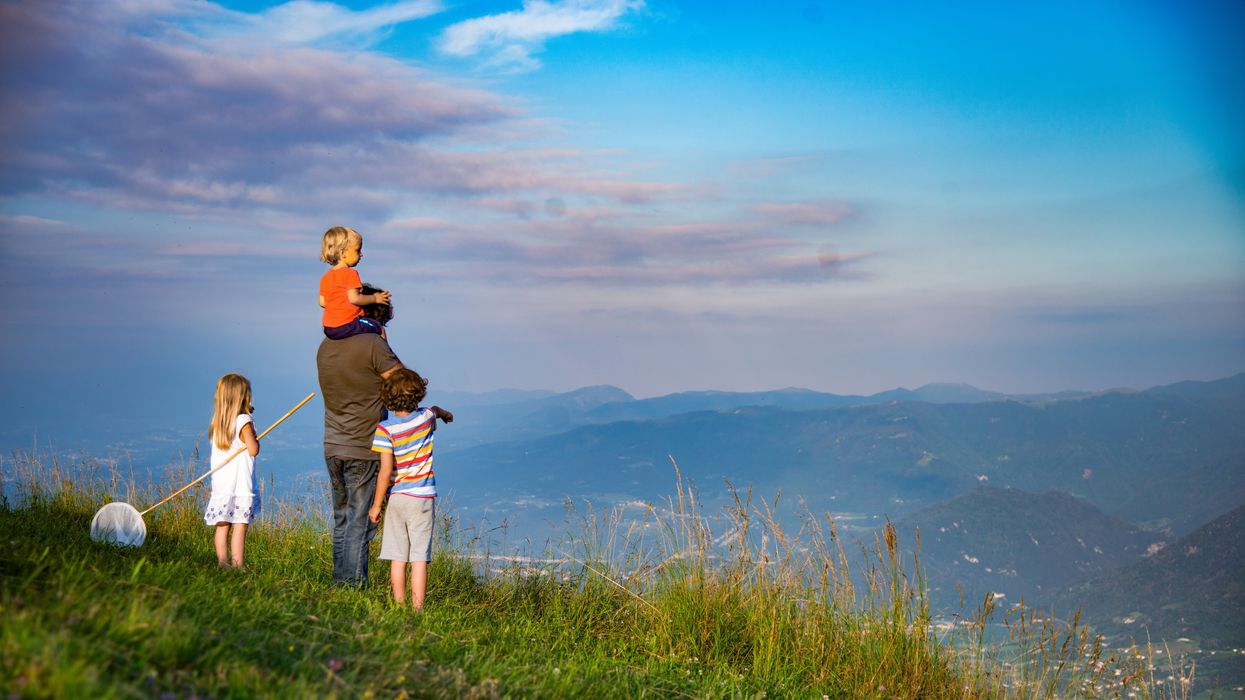Lockard is an Iowa resident who regularly contributes to regional newspapers and periodicals. She is working on the second of a four-book fictional series based on Jane Austen’s “Pride and Prejudice."
The “Father of our Country,” George Washington, was ironically not himself a father — not a biological one anyway. He was a stepfather and raised two of his step-grandchildren, one of whom was named after him. With his step-children/grandchildren and many nieces and nephews, he relished his large family and domestic life.
At 17, his stepdaughter Patsy Custis died of a seizure in his arms, and he never recovered from it. Since she was 2, he had brought her up. He was her father.
Five years ago, we welcomed a foster daughter, Zoe (not her real name), who was 4 and a half when she came to live with us. Fifteen minutes after coming into our home she tried to strangle our golden retriever. Things only got worse from there.
What had happened with Zoe’s biological mother was unspeakable, and Zoe had been severely and extremely detrimentally impacted by her abuse.
But what had not happened with her biological father, Mark (not his real name), was terribly damaging. He simply was not there, for any reason, at any time. His sole contribution, other than his sperm, was viewing her once in the newborn nursery and, unfortunately, signing his name on her birth certificate.
When Zoe was taken away from her mother, Mark was living in a condemned hotel room with his new girlfriend. The girlfriend had two older children, as well as a toddler and a baby by him, and was expecting another baby (his) in a few months.
As the stated goal of foster care is “reuniting the child with his or her biological family,”
Mark necessarily factored into Zoe’s foster care plan. Accordingly, she would now be spending two and a half hours with him, two or three times a week.
It is an untrue adage “there are no free lunches.”
As Mark did not work, he was available anytime to be picked up by an agency driver and driven to a restaurant for a long, free lunch with Zoe and her case worker. These bi- or triweekly lunch arrangements were more than amenable to him.
And they were absolutely heavenly to Zoe, who was uncontrollably jubilant upon returning from their outings. Her father, before a total stranger, was now “Daddy.”
Surely, though, wasn’t that better than returning from the mandated supervised visits with her mother, with Zoe invariably violent or hysterical?
No! Both parents were detrimental to Zoe’s mental health. To see her reeling from one extreme to the other was heartbreaking.
There is much, much more to this story. Every day Zoe was with us was both difficult and heartrending. As we discovered more about her past and how much help she would need to recover from it, we realized the inadequacy of the foster care system when it came to handling the tragic possibilities of parents who cannot or do not parent their children. We also learned first-hand of the heroes working in these programs: underpaid, overworked and yet somehow tireless.
Zoe’s story has a happy ending. After years of paperwork and hearings, she was adopted by a wonderful family. They are perfect for her, and she for them.
After leaving the “system,” she never saw her “father” again.
There is a desperate need for foster care in this country. The statistics are harrowing: Foster children average 8.3 moves between different homes before they age out of the system. Eighty percent of them exhibit mental health issues. More than one-fifth of the prison population has experienced foster care, and it factors majorly into every societal blight, from drug addiction to human trafficking. In the United States, 400,000 children are now in foster care, many of them homeless. Terrible circumstances, in critical need of attention and solutions.
And beneath it all is the crux of the problem: the essential need for parents to parent.
So, happy Father’s Day to fathers and step-fathers everywhere, who take their “job” seriously, who make it their mission to care for the children in their sphere, who show up for the umpteenth double-header or dentist appointment, bandage the neighbor kid’s knee, pay for camps and colleges, who take in foster children.
Happy Father’s Day as well to all the mentors and coaches, the teachers and leaders, who help along the way, nurturing and encouraging children, who inspire by setting a good example, who fill the gaps.
John F. Kennedy, our 35th president, took office 181 years after our first president. And the world changed dramatically. Yet, the truth of this quote by Kennedy never changes: “Children are the world’s most valuable resource, and our best hope for the future.”
Washington would certainly have agreed.




















